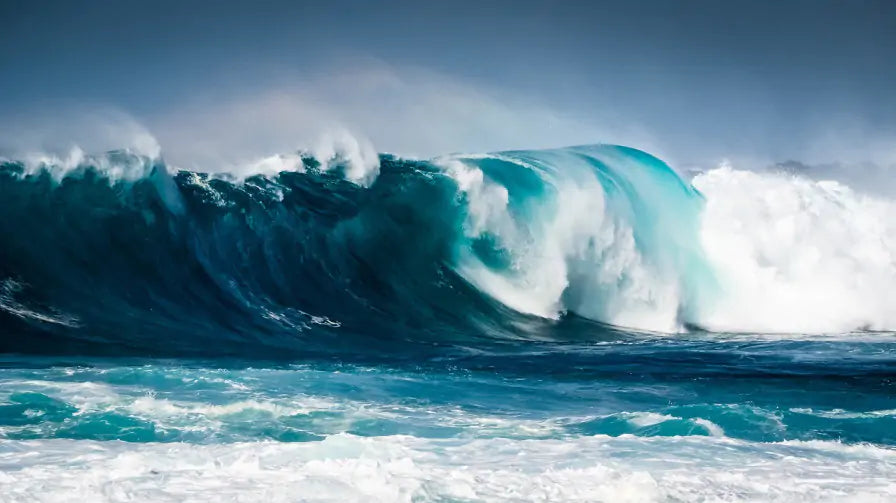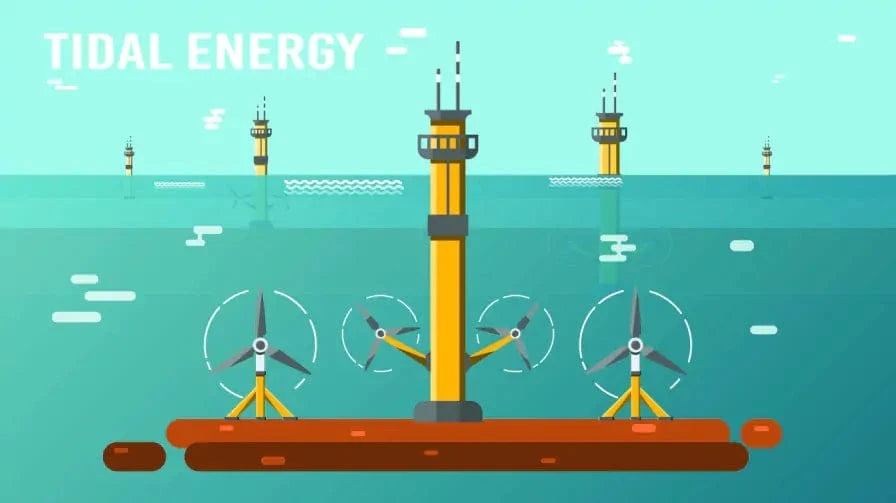Your basket is currently empty.
Shop NowClean Energy Focus - Tidal Power

Clean Energy Focus:
Tidal Power
Globally, 81% of the energy we use comes from fossil fuels. Fossil fuel is not an infinite resource and the production and use of these fuels creates pollution. Energy demands are growing with the increasing global population, and we need to minimise the damage that is being caused to our planet. We need alternative sources of energy.
Clean energies like solar and wind power provide a solution to an extent, but they do have their drawbacks, particularly the fact that they are not always available or predictable.
Tidal power is an alternative which we have known about for hundreds of years, but it has only recently come into focus.
The history of tidal power
Water has been a source of power for hundreds of years. The first recorded use of tidal power was in tidal mills, in the middle ages, where one still stands in Suffolk today. The mills captured water at high tide and then release it through a sluice to turn a water wheel which was used to grind up grain.
In the late 18th and 19th centuries, electricity became the commonplace source of energy, and people sought to look for other ways to generate it.
Tidal power was used in the 1920’s in the United States to generate electricity.

What is tidal power?
Tidal power is a form of hydropower which is similar to the hydropower which uses dams and turbines in rivers. It’s gravity that makes the water turn a turbine, and tidal power also uses gravity. The gravity with tidal power comes from the sun and moon, which causes the tide to rise and fall. The power of the tide can then be used to create energy.
Tidal power could generate around 20% of the energy that the UK needs. Tidal power is reliable, and infinite, though converting it into electrical energy is not easy.
There are 8 sites in this country where tidal power stations could possibly be built, including at the Severn, Dee, Solway, and Humber estuaries, and only 20 sites in the world have been identified as feasible tidal power stations.
How is tidal power generated?
Tidal Barrages
A large dam is built across a river estuary. When the tide goes in and out, water flows through tunnels in the dam.
The flow of the tide can be used to turn a turbine, or to push air through a pipe, that turns a turbine.
Offshore turbines
These work like a wind farm but under water. This is much cheaper to build than a barrage, and there are many suitable sites.

The advantages and disadvantages of tidal power
Advantages
- Tidal power is free
- It produces no greenhouse gases or other pollutants
- It uses no fuel
- It produces electricity quite reliably
- It’s not expensive to maintain.
- Offshore turbines are not too expensive to build and they don’t have such an impact on the environment
Disadvantages
- A barrage is expensive to build, and it affects the environment for miles. Birds and fish may not be able to feed or migrate as usual.
- Tidal barrages only provide power for about 10 hours each day.
- There aren’t many suitable sites for tidal barrages
